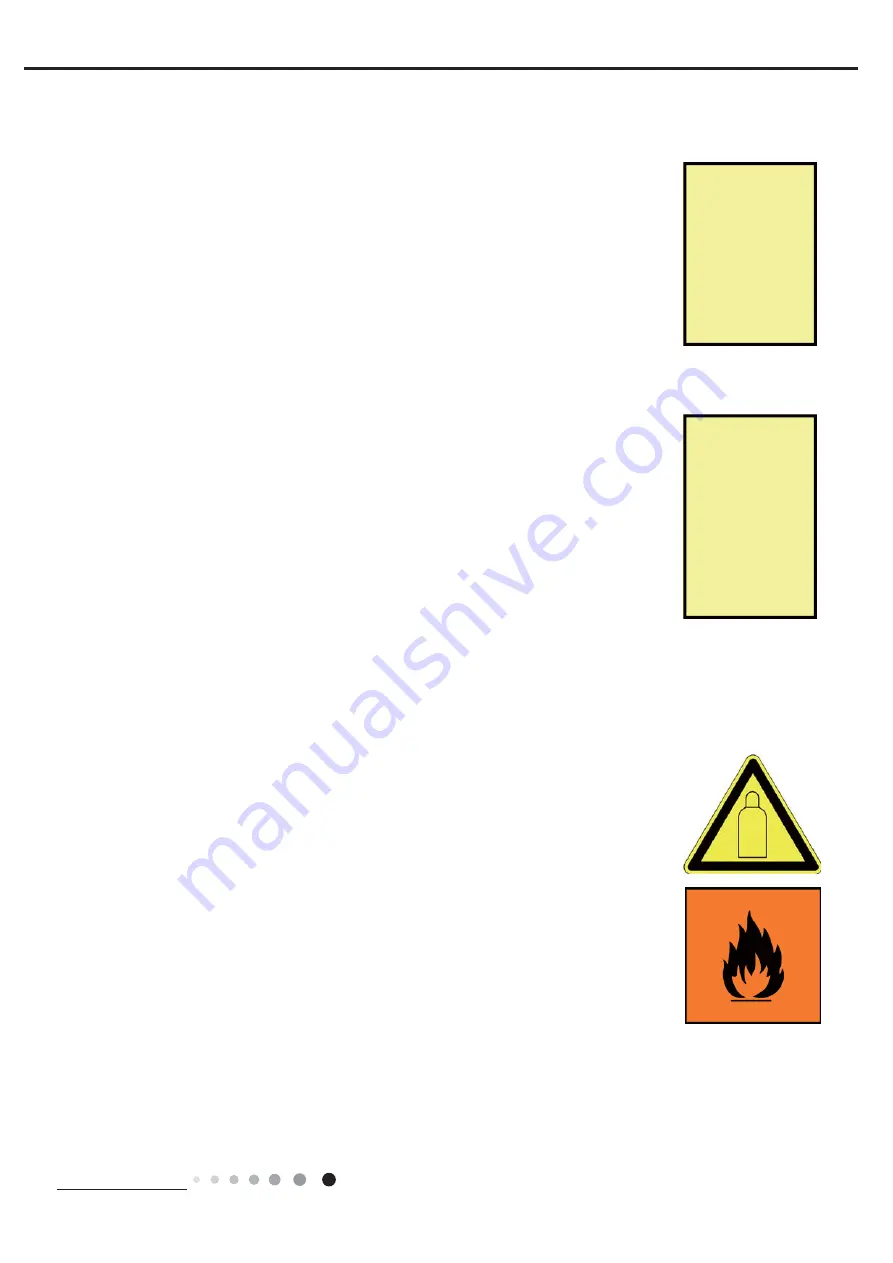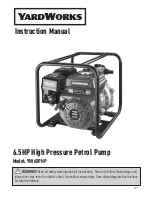
13
Technical Information
Service Manual
8. Weigh the cylinder and compare it against the tare weight (normally stamped on the
!^ X # !+
out if and how much refrigerant there is inside the cylinder.
9. For accurate charging, use a set of reliable scales with appropriate resolution (depending
on the size of system charged with refrigerant) and use the smallest size of cylinder
available.
J=!Z?@J!! Z?@J
X !# \ ^#! $
!
12. For refillable recovery cylinders keep in mind that with recovered amounts of HC
refrigerant, oil will always be present specific amounts may remain in the cylinder after
emptying.
Charging HC!
Always use the
smallest cylin-
der possible and
relay on appro-
priate accurate
and sensitive
scales
The storage of R-290 cylinders is controlled by regulations. These regulations take priority
over the present guidelines. Typically, such rules imply the following:
1. Cylinders should be stored in a separate area, preferably outside, otherwise in a dry, well
ventilated place far away from any ignition source.
2. Admission to storage area must only be given to authorised personnel only. Storage areas
X$X$
3. Storage areas should be at ground level and never in the basement.
4. Access should be easy – exclude any obstacles.
5. Cylinders should be stored and operated only in an upright position.
6. Choose appropriate measures to prevent static charges
7. Please remember that the maximum quantity of stored refrigerant sometimes might be
regulated by national regulations.
Basically the following must be regarded concerning the transport of R290 cylinders:
1. During the transportation of R290 always carry along printed information about the
refrigerant. In case of emergency these information must be easy accessible. There
are often different demands to the transporters carrying a great quantity of gas. Inform
yourself before the scheduled transport.
2. Make yourself familiar with the risks of the refrigerant and the emergency measures
in case of accident or emergency.
{[! ! Q $ $ # ! < !
# Q $ # ! ? X$ X
Q#Q $#
4. Cylinders must be transported in an upright position and be tightly secured.
5. Make sure of a proper ventilation inside the van even though it might request a
change in the vans‘ body construction.
+ !$#
X$# !
8. Do not leave cylinders in a locked van without surveillance longer than necessary.
The transport of cylinders is controlled by laws in most countries. These laws must always be regarded first before the
mentioned guidelines here. In many cases information about regulations for the transport of cylinders could be given by the
dealer of the refrigerant.
Read More!
Guidlines for the
safe use of hydro-
carbon refrige-
rants
GIZ—PROKLIMA
http://www.gtz.de/
proklima
















































